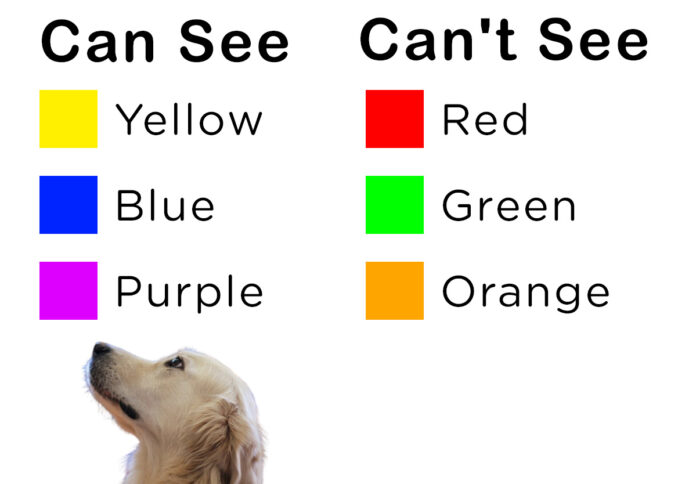Do you ever wonder what colors your furry friend sees best? The easiest color for dogs to see might surprise you! Let’s dive into the fascinating world of canine vision and discover how our four-legged companions perceive the world around them.
Understanding Dog Vision Basics
Dogs don’t see the world in black and white as once believed. Their vision is dichromatic meaning they can see some colors, just differently from humans. As discussed in various dog health articles, our canine friends have a unique way of perceiving their environment.
The Colors Dogs See Best
The easiest color for dogs to see are blues and yellows. Here’s why:
-
Blue Spectrum
- Most distinct color for dogs
- Appears vibrant and clear
- Easy to distinguish from other colors
-
Yellow Spectrum
- Second most visible color
- Appears bright and noticeable
- Often catches dogs’ attention
Why These Colors Stand Out
Dogs’ eyes contain two types of color receptors (cones), while humans have three. This makes the easiest color for dogs to see limited to certain parts of the spectrum. According to Pet like boss, understanding this can help pet owners make better choices for their furry friends.
Colors That Are Challenging for Dogs
- Red appears as dark brown or black
- Green looks yellowish
- Orange seems more brownish
- Purple appears blue
Practical Applications
Understanding the easiest color for dogs to see can help in:
-
Choosing Toys
- Select blue or yellow toys
- Avoid red or green toys
- Consider contrast with background
-
Training Tools
- Use blue or yellow training equipment
- High-contrast markers work best
- Avoid relying on red signals
Real-World Impact
The easiest color for dogs to see affects their daily life in many ways:
- Playing fetch (blue balls are easier to track)
- Agility training (yellow equipment stands out)
- Finding toys in grass (blue toys are more visible)
Tips for Pet Parents
-
Choose Appropriate Toys
- Bright blue or yellow
- High contrast patterns
- Avoid single-color red toys
-
Training Environment
- Use blue or yellow markers
- Create contrast with surroundings
- Consider lighting conditions
-
Safety Considerations
- Bright colored leashes
- Reflective gear in blue/yellow
- High-visibility equipment
Making Life Easier for Your Dog
Understanding your dog’s color vision helps create a better environment:
-
Home Setup
- Clear pathways
- Contrasting colors for important items
- Well-lit spaces
-
Outdoor Activities
- Visible toys and equipment
- Clear training markers
- Safe play areas
-
Training Success
- Color-appropriate tools
- Enhanced visibility
- Better response rates
Common Misconceptions
Many people still believe:- Dogs only see in black and white- Dogs can see all colors like humans- Red is attention-grabbing for dogs
The Science Behind Dog Vision
Dogs’ eyes are different from ours:- Fewer cone types- More rod cells- Better night vision- Wider field of view
Future Considerations
As we learn more about dog vision:- Better toy designs- Improved training tools- Enhanced safety equipment
Understanding the easiest colors for dogs to see helps us:- Choose better toys- Create effective training environments- Improve safety measures- Enhance their daily experiences
Remember, while dogs may not see the full rainbow like we do, they’ve evolved perfect vision for their needs. By considering their color perception, we can make their world more engaging and accessible.
Additional Resources
For more information about dog care and behavior, visit these helpful resources:- Dog training guides- Color vision studies- Pet care tips
Remember to make choices that consider your dog’s unique vision capabilities, and don’t forget to check out more pet care tips at Pet like boss for comprehensive guidance on raising happy, healthy pets.
Note: Every dog is unique, and while these color preferences are generally true, individual dogs may respond differently to various colors and stimuli.












